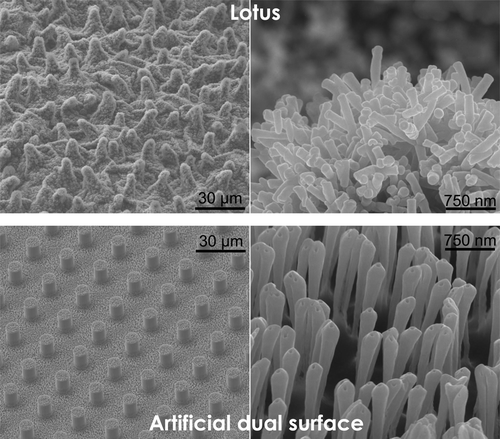Nanoscale Pattering of Microtextured Surfaces to Control Superhydrophobic Robustness
슈퍼관리자
2021-05-21
Nanoscale Pattering of Microtextured Surfaces to Control Superhydrophobic Robustness
-
Authors :
Tae-Gon Cha, Jin Woo Yi, Myoung-Woon Moon, Kwang-Ryeol Lee, and Ho-Young Kim
-
Journal :
Langmuir
-
Vol :
26
-
Page :
8319-8326
-
Year :
2010

Abstract
Most naturally existing superhydrophobic surfaces have a dual roughness structure where the entire microtextured area is covered with nanoscale roughness. Despite numerous studies aiming to mimic the biological surfaces, there is a lack of understanding of the role of the nanostructure covering the entire surface. Here we measure and compare the nonwetting behavior of microscopically rough surfaces by changing the coverage of nanoroughness imposed on them. We test the surfaces covered with micropillars, with nanopillars, with partially dual roughness (where micropillar tops are decorated with nanopillars), and with entirely dual roughness and a real lotus leaf surface. It is found that the superhydrophobic robustness of the surface with entirely dual roughness, with respect to the increased liquid pressure caused by the drop evaporation and with respect to the sagging of the liquid meniscus due to increased micropillar spacing, is greatly enhanced compared to that of other surfaces. This is attributed to the nanoroughness on the pillar bases that keeps the bottom surface highly water-repellent. In particular, when a drop sits on the entirely dual surface with a very low micropillar density, the dramatic loss of hydrophobicity is prevented because a novel wetting state is achieved where the drop wets the micropillars while supported by the tips of the basal nanopillars.















